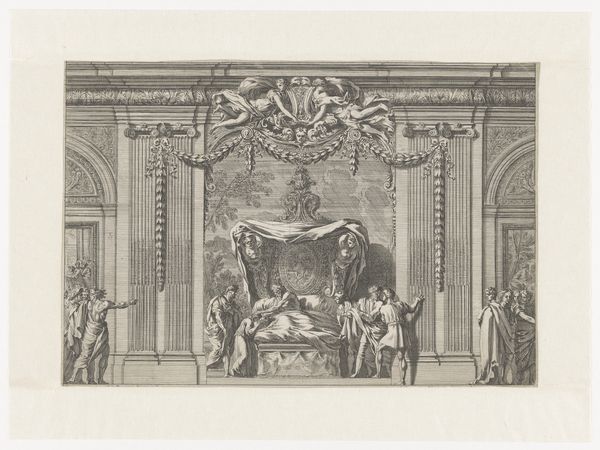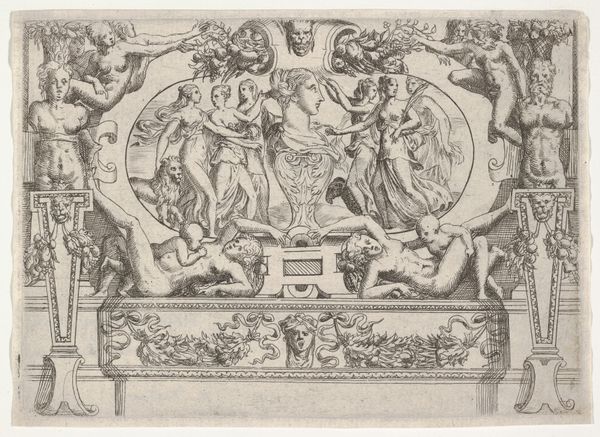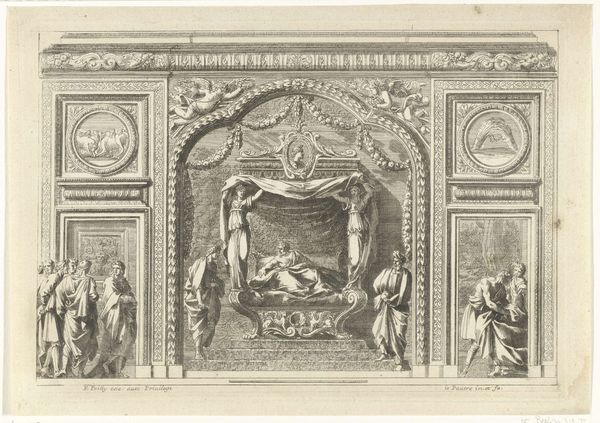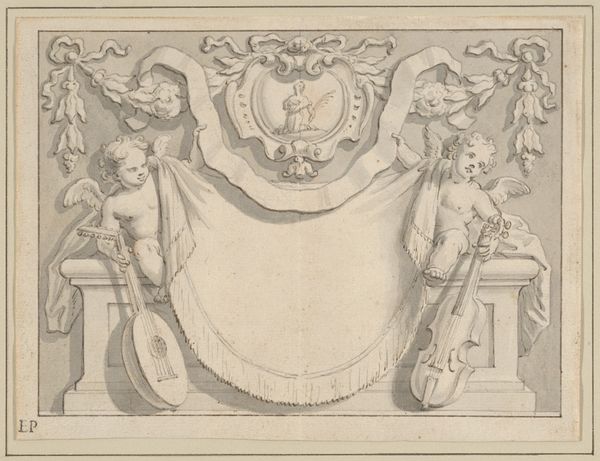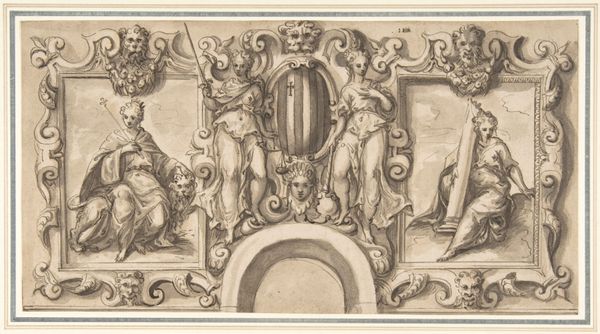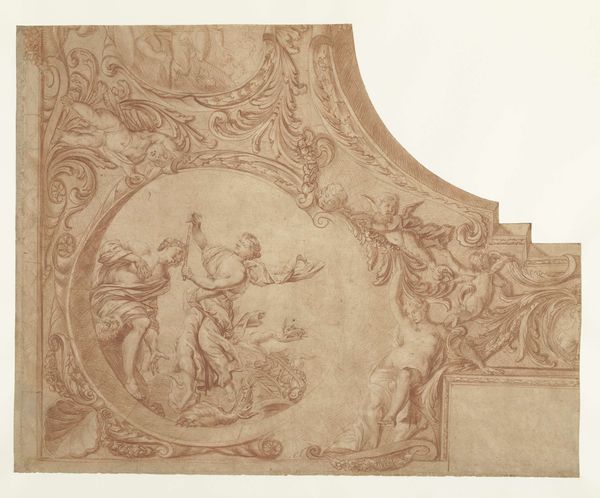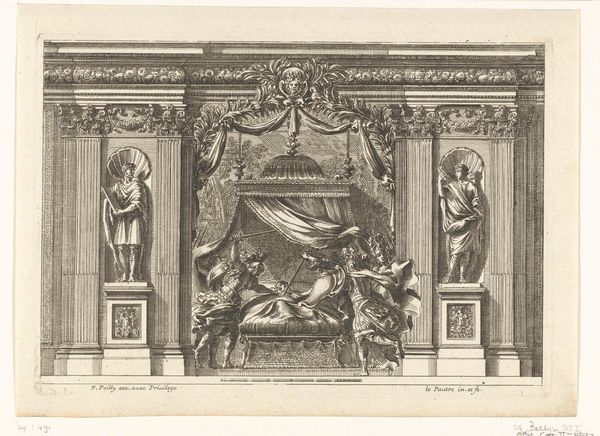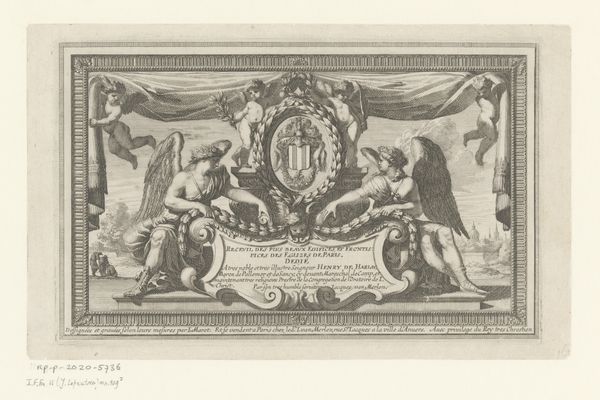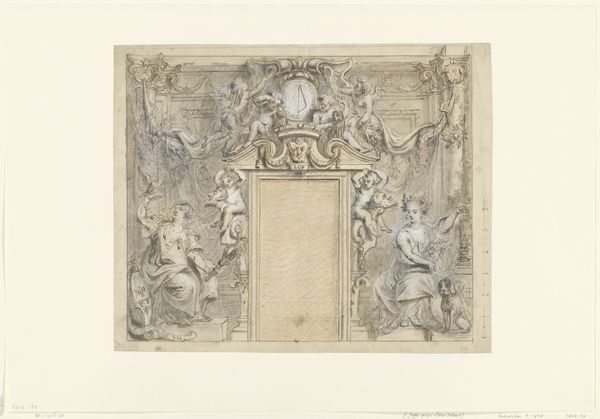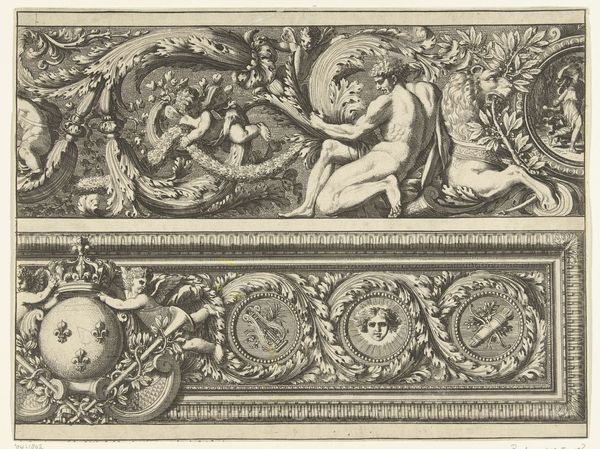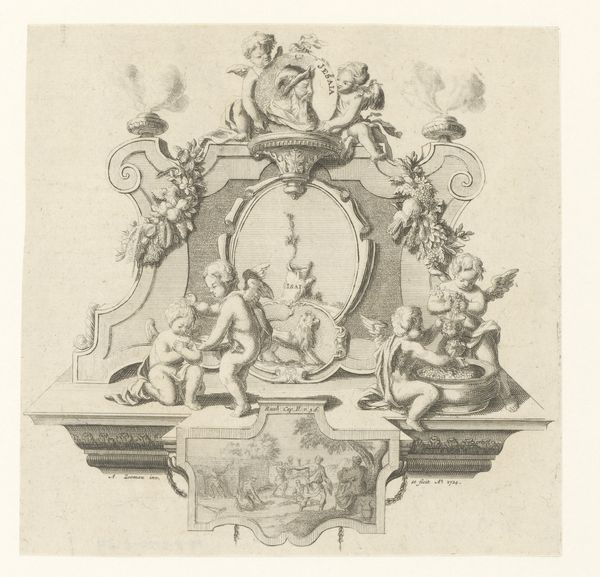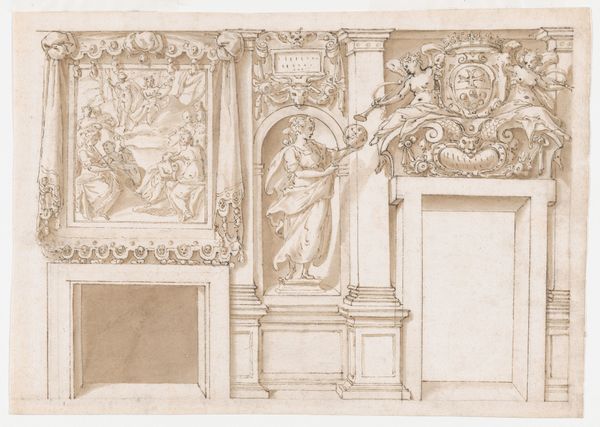
engraving
#
allegory
#
baroque
#
figuration
#
history-painting
#
engraving
Dimensions: height 76 mm, width 159 mm
Copyright: Rijks Museum: Open Domain
Curator: Good morning. Today, we're examining a print titled "Allegorie op het Oude en het Nieuwe Testament," or "Allegory on the Old and New Testament." This engraving, dating back to 1743, can be found here at the Rijksmuseum. Editor: My initial impression is of a carefully balanced, almost theatrical composition. The stark contrast in lines creates a powerful sense of depth and definition, especially for such a complex arrangement of figures and symbols. Curator: Absolutely. It is striking how the anonymous artist has structured this piece. Note the symmetry, bisected by the altar-like structure in the center. We see figures mirroring each other on either side, all framed within elaborate, decorative scrollwork. It really creates a sense of formal order, even amidst the baroque flourishes. Editor: Yes, that central element—almost a keystone—anchors the symbolic weight. On the left, we have figures and objects associated with the Old Testament: Moses, perhaps, with the tablets, overshadowed. Conversely, the right teems with symbols of the New Testament: a figure holding a chalice and cross, floating serenely on a cloud bank above what appears to be a papal tiara... Quite potent imagery. Curator: Indeed. The iconographic density speaks volumes. The Old Testament figures appear weighed down, literally sitting in shadow, while those of the New Testament ascend into a brighter, more dynamic space. Note the contrasting diagonal lines—downward sloping on the left, upward on the right—reinforcing this dichotomy structurally. Editor: It's also worth considering the broader historical context. In 1743, the relationship between the Old and New Testaments would have been a central theme within theological and social discourse. This print distills those complex ideas into a digestible, visually striking form for both theological teaching and political and social commentary. Curator: Precisely. And even if viewers are unfamiliar with the specific theological nuances, the inherent visual cues—light versus shadow, ascension versus descent—still communicate a clear narrative of transition and perhaps even transcendence, wouldn’t you agree? The artist understood that inherent structure to communicate beyond purely referential iconography. Editor: Undoubtedly. Reflecting on it, it's fascinating how the artwork employs relatively simple engraving techniques to convey profound theological ideas with real emotional force and layered iconographic symbols. Curator: Yes, a piece rich in structure and symbol both—effectively composed for both intellectual reflection and personal interpretation.
Comments
No comments
Be the first to comment and join the conversation on the ultimate creative platform.
